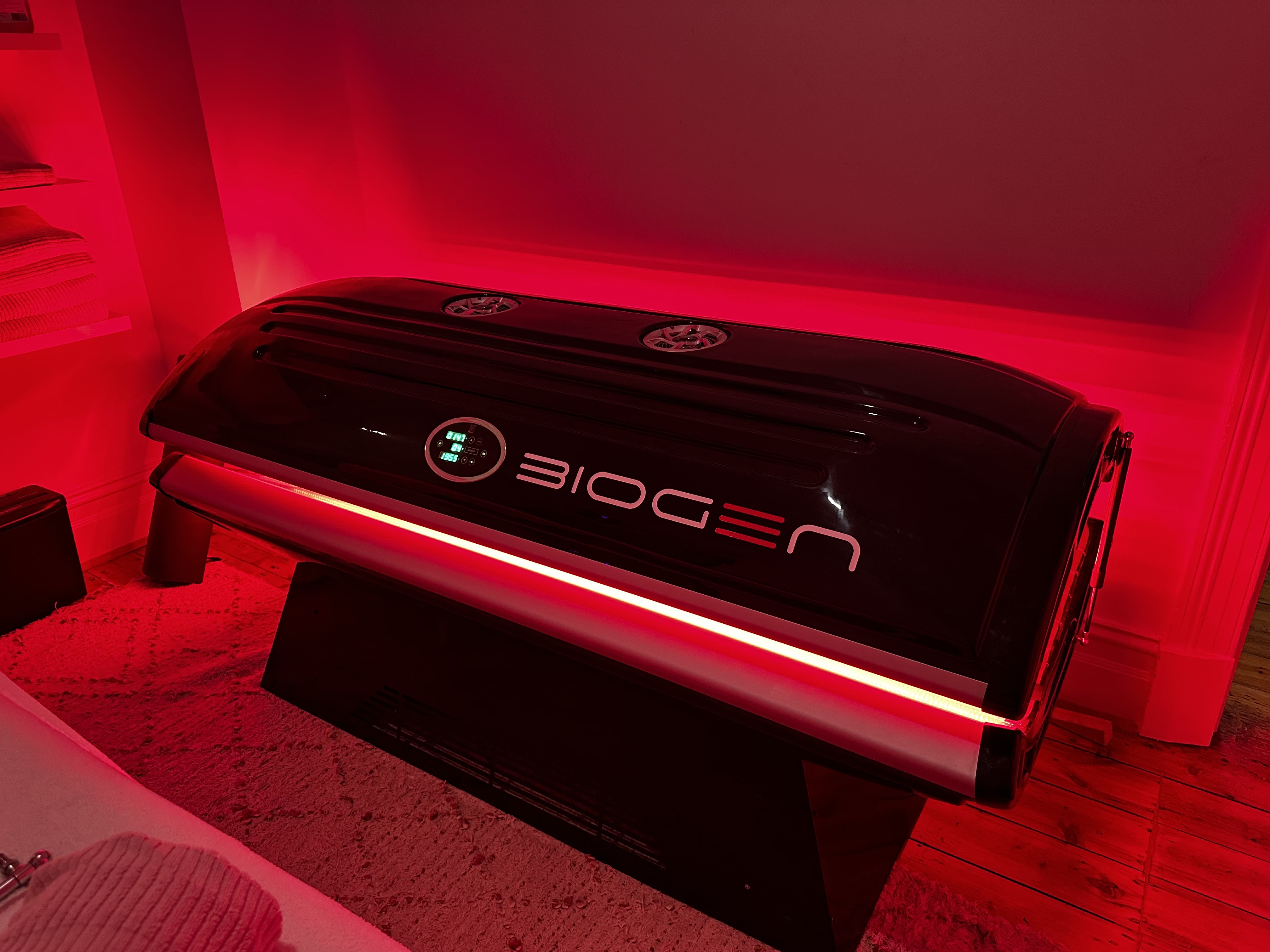What is LLLT?
Low-Level Laser Therapy (LLLT), also known as photobiomodulation or red light therapy, is a non-invasive treatment that uses specific wavelengths of light to stimulate cellular function. Unlike high-powered lasers used for surgery, LLLT uses low-power lasers or LEDs that don't generate heat or damage tissues.
The therapy works by delivering red and near-infrared light (typically in the range of 630-850nm) to your skin and cells. These specific wavelengths can penetrate through the skin to various depths, interacting with light-sensitive components within your cells.
History of LLLT
The therapeutic use of light has ancient roots, but modern LLLT began in the 1960s when Hungarian physician Endre Mester discovered that low-power laser treatment could stimulate hair growth and wound healing in mice. Since then, research into LLLT has expanded dramatically, with thousands of studies investigating its effects on various conditions and bodily systems.

The Science Behind LLLT
Cellular Mechanisms
When red and near-infrared light penetrates your tissues, it's absorbed by photoreceptors in your cells, particularly in the mitochondria. The primary photoreceptor is cytochrome c oxidase (CCO), a key enzyme in the electron transport chain involved in cellular energy production.
This absorption triggers a series of cellular events that enhance energy production, modulate reactive oxygen species, and activate transcription factors that lead to changes in gene expression and protein synthesis.
Optimal Wavelengths
Research has identified specific wavelengths that provide the most therapeutic benefits:
- Red light (630-660nm): Primarily affects the skin, penetrating approximately 8-10mm
- Near-infrared light (810-850nm): Penetrates deeper (30-50mm) to affect muscles, bones, and deeper tissues
These wavelengths fall within what's known as the "optical window" or "therapeutic window" where light can most effectively penetrate tissues.
Dosage Factors
The effectiveness of LLLT depends on several parameters:
- Wavelength: As discussed above, different wavelengths penetrate to different depths
- Power density: The power output per area (typically measured in mW/cm²)
- Energy density: The energy delivered per area (typically measured in J/cm²)
- Treatment duration: How long the light is applied
- Treatment frequency: How often therapy is administered
Optimal dosing follows a biphasic dose response, meaning too little energy won't produce effects, while too much can inhibit benefits.
Clinical Applications of LLLT
Sports Performance & Recovery
LLLT has been shown to improve muscle performance, reduce fatigue, and accelerate recovery after exercise. It helps reduce inflammation and oxidative stress following intense workouts, and studies have found it can increase strength, endurance, and muscle mass when used before or after training.
Pain Management
One of the most well-studied applications of LLLT is for pain relief. It has been found effective for treating various types of pain, including chronic neck and back pain, joint pain, neuropathic pain, and fibromyalgia. LLLT works by reducing inflammation, decreasing oxidative stress, and modulating pain signaling pathways.
Inflammation Reduction
LLLT has powerful anti-inflammatory effects, helping to reduce tissue swelling and inflammation. It modulates pro-inflammatory cytokines and enhances anti-inflammatory mediators, making it beneficial for inflammatory conditions like arthritis, tendinitis, and muscle sprains.
Wound Healing
LLLT accelerates wound healing by stimulating cellular proliferation, enhancing collagen synthesis, and improving microcirculation. It has been used to treat diabetic ulcers, pressure sores, surgical incisions, burns, and other slow-healing wounds, with studies showing faster healing times and better outcomes.
Skin Health & Aesthetics
LLLT has gained popularity in dermatology for its ability to improve skin health and appearance. It stimulates collagen production, reduces wrinkles and fine lines, improves skin tone and texture, and helps manage conditions like acne, psoriasis, and eczema. It also shows promise for hair regrowth in certain types of hair loss.
Neurological Applications
Emerging research suggests LLLT may have neuroprotective effects and could benefit various neurological conditions. It can penetrate the skull and stimulate brain cells, potentially improving cognitive function, mood disorders, and helping recovery after stroke or traumatic brain injury.
Research and Evidence
The scientific evidence for LLLT continues to grow, with thousands of peer-reviewed studies published in medical journals. Research quality varies, but several systematic reviews and meta-analyses have confirmed LLLT's effectiveness for specific conditions.
Key Research Findings:
- A 2016 systematic review in the British Journal of Sports Medicine found that LLLT significantly improves muscle recovery and performance when applied before and after exercise.
- The Lancet published a meta-analysis showing LLLT's effectiveness for neck pain reduction compared to placebo treatments.
- Multiple studies in the Journal of Photochemistry and Photobiology have documented the cellular mechanisms of LLLT, confirming its effects on mitochondrial function.
- Research published in Lasers in Medical Science has demonstrated LLLT's efficacy for wound healing, showing faster healing rates and better tissue repair.
While more research is needed in some areas, the growing body of evidence supports LLLT as a valuable therapeutic approach for numerous applications.
Our LLLT Treatment Approach
Assessment
We begin with a comprehensive evaluation of your health goals, current condition, and any specific concerns you may have. This helps us customize your treatment plan for optimal results.
Treatment Planning
Based on your assessment, we develop a personalized protocol that defines the optimal wavelengths, power densities, treatment durations, and frequencies for your specific needs.
LLLT Session
During your session, you'll relax comfortably while our state-of-the-art devices deliver precise light therapy to targeted areas. Sessions typically last 10-20 minutes, depending on your treatment plan.
Progress Monitoring
We track your progress throughout your treatment plan, making adjustments as needed to ensure you're getting the best possible results from your LLLT therapy.
Ready to experience the benefits of LLLT?
Book your session today and begin your journey to improved health, enhanced performance, and faster recovery.
Contact Us